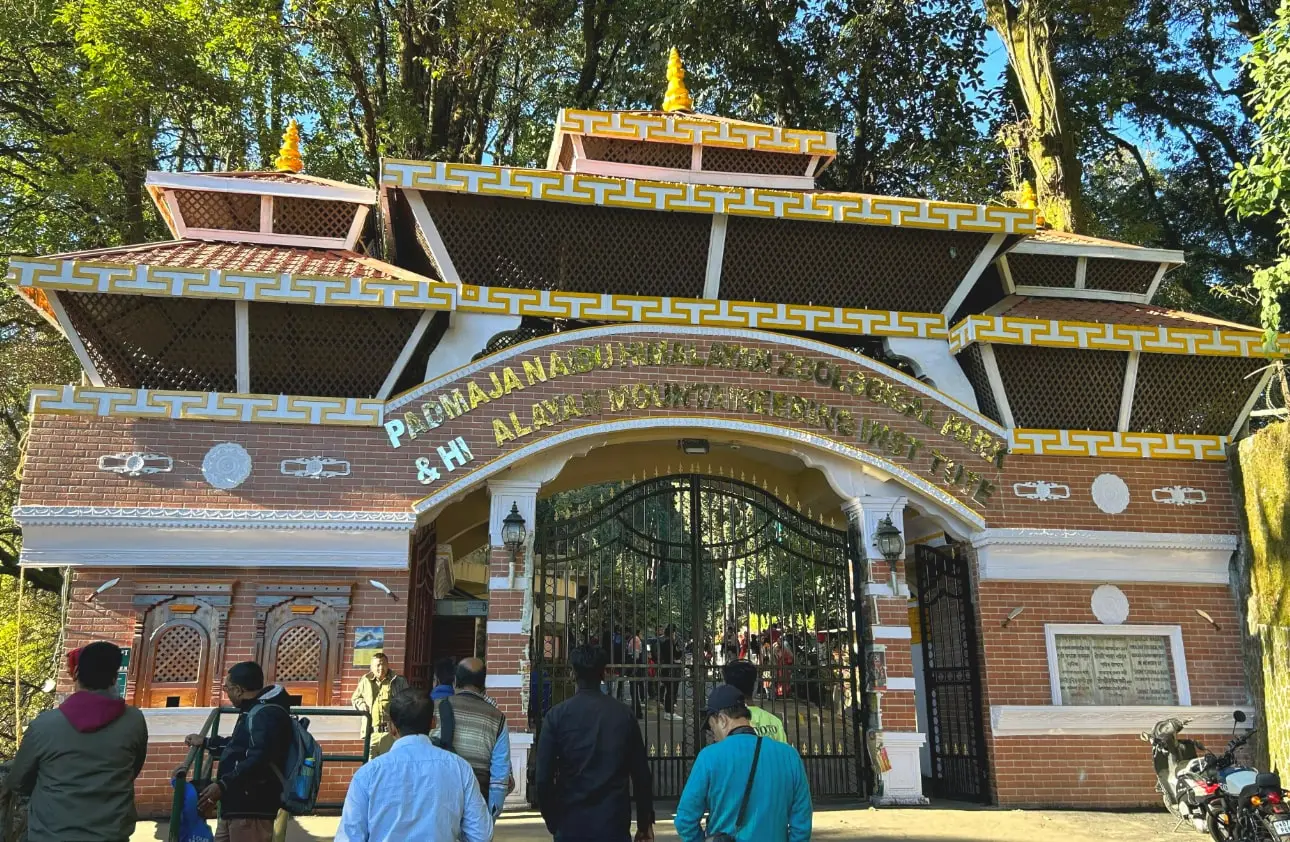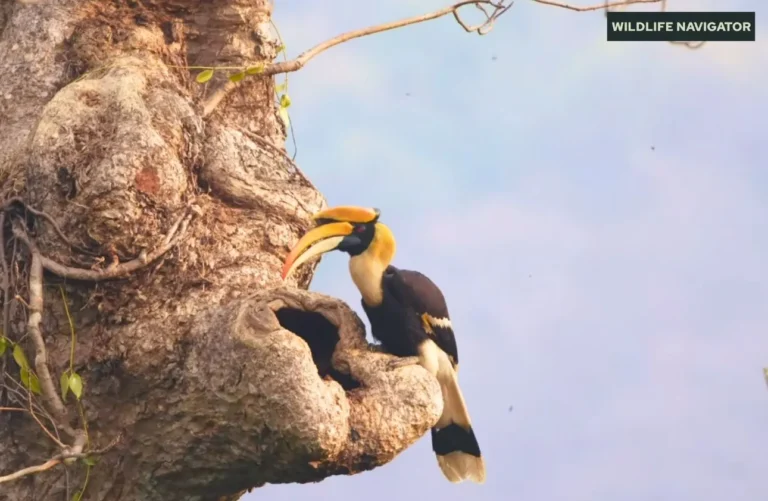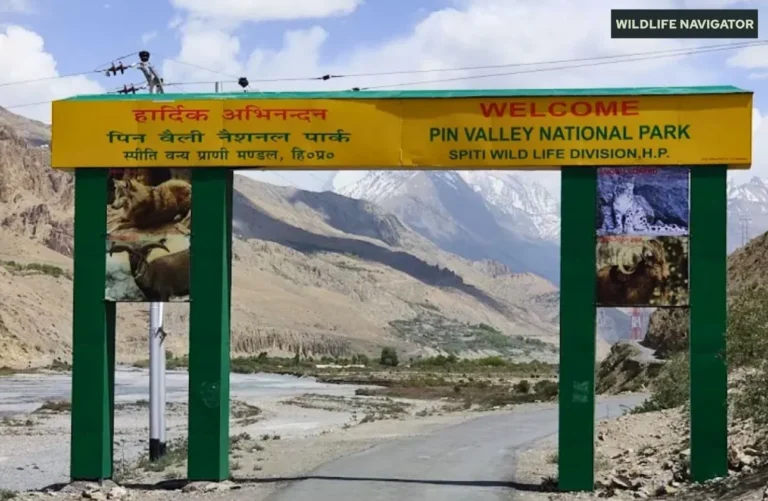List of Zoological Parks in India 2025

Zoological parks in India serve as vital centres for wildlife conservation, public education, and species research. With rich biodiversity and over a billion people, India’s zoos play a crucial role in bringing awareness about wildlife protection, especially for urban communities that may not have access to natural habitats. These institutions are no longer only about animal display; they have evolved into scientifically managed spaces dedicated to conservation breeding, habitat preservation, rescue operations, and environmental learning.
India currently operates a structured zoo network monitored by the Central Zoo Authority (CZA), ensuring ethical standards, animal welfare, and scientific management. From large wilderness-style zoos with safari zones to specialised rescue centres and traditional zoological gardens, these facilities provide an opportunity for visitors to understand India’s wildlife heritage, endangered species, and the urgent need for conservation action.
This guide explores zoological parks across Indian states, highlights leading zoos contributing to conservation, and offers practical travel insights for responsible and meaningful visits.
History & Evolution of Zoos in India
Zoological parks in India have evolved significantly from traditional animal-display gardens to scientific conservation institutions. The earliest zoos in the country emerged during the colonial period, inspired by European zoological gardens established for recreation and curiosity. Alipore Zoological Gardens in Kolkata (established in the 19th century) is one of the oldest examples, originally created to showcase exotic and native species to the public.
Following independence, the focus gradually shifted from entertainment to education and wildlife protection. A major milestone came with the establishment of the Central Zoo Authority (CZA) under the Wildlife Protection Act, 1972. The CZA standardised zoo management practices, regulated breeding programs, monitored animal welfare, and drove the transition toward ethical, science-based zoological practices.
Modern Indian zoos now emphasise naturalistic enclosures, species-specific care, habitat enrichment, and veterinary infrastructure. Many also participate in national and global conservation breeding efforts for threatened species, reflecting a strong commitment to biodiversity preservation. Through this transformation, India’s zoological parks have moved beyond display to serve as institutions that protect, rehabilitate, and reintroduce wildlife while educating millions of visitors every year.
Categories of Zoological Facilities in India
India’s zoological network operates under the Central Zoo Authority, which classifies facilities by size, species range, and conservation capacity. This framework ensures ethical animal care, scientific management, and responsible public education.
Large Zoos
Expansive parks with significant animal diversity, advanced veterinary facilities, naturalistic habitats, and active breeding programs. They often feature safari zones and interpretation centres.
Examples: Arignar Anna Zoological Park (Chennai), Mysuru Zoo (Karnataka), Nandankanan Zoological Park (Odisha), Rajiv Gandhi Zoological Park (Pune)
Medium Zoos
Moderate area and species diversity, focusing on regional wildlife, education, and regulated visitor experiences.
Examples: Padmaja Naidu Himalayan Zoological Park (Darjeeling), Chhattisgarh Biological Park (Naya Raipur), Kamla Nehru Zoological Garden (Ahmedabad)
Small Zoos
Compact facilities with limited species, serving local populations and school groups with basic conservation learning.
Examples: Kanpur Zoological Park (Kanpur), Siddharth Garden Zoo (Aurangabad), Deer Park, Hisar (Haryana)
Mini Zoos
Very small collections, primarily educational in purpose, often host common native species or rescued animals.
Examples: Mini Zoo, Port Blair (Andaman & Nicobar), Kavaratti Mini Zoo (Lakshadweep)
Rescue & Rehabilitation Centres (Associated Facilities)
Focus on rescuing, treating, and rehabilitating injured or confiscated wildlife; many operate alongside major zoos but may not be open to visitors.
Examples: Guwahati Wildlife Rescue Centre (Assam), Bannerghatta Rescue & Rehabilitation Centre (Karnataka)
This categorisation illustrates how zoological facilities in India range from world-class conservation hubs to community-level awareness centres, collectively strengthening wildlife protection and public engagement.
Zoological Parks in India
India’s zoological network spans every region of the country, with large metropolitan zoos, forest-fringe wildlife parks, mini zoos, and specialised breeding centres. From high-altitude Himalayan enclosures to coastal reptile parks and island-based mini zoos.
Each state contributes to wildlife education and conservation through its zoological facilities. The following state-wise list highlights major zoos and their key features to help readers explore India’s diverse zoo landscape.
Zoological Parks in Andhra Pradesh
Andhra Pradesh houses large forest-edge zoos and rescue centres, especially around Visakhapatnam and Tirupati, supporting regional wildlife like deer, big cats, and reptiles.
| Zoo | Year Established | City | Key Feature |
|---|---|---|---|
| Indira Gandhi Zoological Park | 1977 | Visakhapatnam | One of India’s biggest natural-setting zoos |
| Sri Venkateswara Zoological Park | 1987 | Tirupati | Largest zoo in India by area |
| Vijayawada Mini Zoo (Rajiv Gandhi Park) | — | Vijayawada | Urban nature education park |
| Kambalakonda Mini Zoo | — | Visakhapatnam | Forest-reserve zoo facility |
Zoological Parks in Arunachal Pradesh
Arunachal Pradesh focuses on high-altitude species and Himalayan biodiversity.
| Zoo | Year Established | City | Key Feature |
|---|---|---|---|
| Itanagar Biological Park | — | Itanagar | High-altitude wildlife species conservation |
Zoological Parks in Assam
Assam’s zoos emphasise Northeast biodiversity and rescue-rehab efforts.
| Zoo | Year Established | City | Key Feature |
|---|---|---|---|
| Assam State Zoo-cum-Botanical Garden | 1957 | Guwahati | Largest zoo in Northeast India |
| Guwahati Wildlife Rescue Centre | — | Guwahati | Wildlife rescue & rehabilitation |
Zoological Parks in Bihar
Known for rhino conservation work.
| Zoo | Year Established | City | Key Feature |
|---|---|---|---|
| Patna Zoo | 1973 | Patna | Known for Rhino conservation |
Zoological Parks in Chhattisgarh
Zoos feature safari landscapes and education parks.
| Zoo | Year Established | City | Key Feature |
|---|---|---|---|
| Maitri Bagh Zoo | 1972 | Bhilai | India-Soviet Friendship Zoo |
| Kanan Pendari Zoological Garden | — | Bilaspur | Regional biodiversity zoo |
| Nandan Van Zoo & Jungle Safari | 2016 | Raipur | Asia’s largest man-made safari |
Zoological Parks in Delhi (NCT)
| Zoo | Year Established | City | Key Feature |
|---|---|---|---|
| National Zoological Park | 1959 | New Delhi | India’s national zoo |
Zoological Parks in Goa
| Zoo | Year Established | City | Key Feature |
|---|---|---|---|
| Bondla Wildlife Sanctuary Zoo | — | Ponda | Sanctuary-based zoo |
Zoological Parks in Gujarat
| Zoo | Year Established | City | Key Feature |
|---|---|---|---|
| Sakkarbaug Zoological Garden | 1863 | Junagadh | Oldest Asiatic Lion breeding centre |
| Kamla Nehru Zoo | 1951 | Ahmedabad | Located at Kankaria Lake |
| Sarthana Zoo | 1984 | Surat | Municipal zoo |
| Sayaji Baug Zoo | 1879 | Vadodara | Garden-based zoo |
| Pradhyuman Zoological Park | 2010 | Rajkot | Modern enclosure design |
Zoological Parks in Haryana
| Zoo | Year Established | City | Key Feature |
|---|---|---|---|
| Rohtak Zoo | — | Rohtak | Municipal zoo |
| Mini Zoo | — | Pipli | Blackbuck conservation |
| Kurukshetra Zoo | — | Kurukshetra | Small city zoo |
| Hisar Deer Park | — | Hisar | Deer conservation |
| Peacock & Chinkara Breeding Centre | — | Rewari | Breeding facility |
| Pheasant Breeding Centre | — | Panchkula | Pheasant conservation |
| Pheasant Breeding Centre | — | Morni | High-altitude pheasants |
| Vulture Conservation & Breeding Centre | — | Pinjore | Vulture breeding program |
Zoological Parks in Himachal Pradesh
| Zoo | Year Established | City | Key Feature |
|---|---|---|---|
| Gopalpur Zoo | — | Gopalpur | High-altitude wildlife |
Zoological Parks in Jharkhand
| Zoo | Year Established | City | Key Feature |
|---|---|---|---|
| Bhagwan Birsa Biological Park | 1987 | Ranchi | Large biological park |
| Jawaharlal Nehru Biological Park | — | Bokaro | Large regional zoo |
| Birsa Deer Park | — | Ranchi | Deer conservation |
| Crocodile Breeding Centre | — | Ranchi | Crocodile conservation |
| Tata Steel Zoological Park | 1994 | Jamshedpur | Corporate-managed zoo |
Zoological Parks in Karnataka
| Zoo | Year Established | City | Key Feature |
|---|---|---|---|
| Sri Chamarajendra Zoological Gardens (Mysuru Zoo) | 1892 | Mysuru | Among India’s best zoos |
| Bannerghatta Biological Park | 2002 | Bengaluru | Safari & rescue centre |
| Pilikula Biological Park | 1996 | Mangaluru | Integrated nature education park |
Zoological Parks in Kerala
| Zoo | Year Established | City | Key Feature |
|---|---|---|---|
| Thiruvananthapuram Zoo | 1857 | Thiruvananthapuram | One of India’s oldest zoos |
| Thrissur Zoo | 1885 | Thrissur | Museum-zoo complex |
| Parassinikkadavu Snake Park | — | Kannur | Reptile rescue & display |
Zoological Parks in Madhya Pradesh
| Zoo | Year Established | City | Key Feature |
|---|---|---|---|
| Indore Zoo | 1974 | Indore | Smart Zoo |
| Gwalior Zoo | 1922 | Gwalior | Historic zoo |
| White Tiger Safari & Zoo | 2016 | Satna | World’s first white tiger safari |
Zoological Parks in Maharashtra
| Zoo | Year Established | City | Key Feature |
|---|---|---|---|
| Rajiv Gandhi Zoological Park | 1999 | Pune | Includes Katraj Snake Park |
| Gorewada Zoo | 2020 | Nagpur | Safari-based zoo |
| Siddharth Garden & Zoo | — | Aurangabad | Urban zoo |
| Jijamata Udyaan | 1861 | Mumbai | Heritage zoo |
| Maharajbagh Zoo | — | Nagpur | Central India zoo |
Zoological Parks in Manipur
| Zoo | Year Established | City | Key Feature |
|---|---|---|---|
| Manipur Zoological Garden | 1976 | Imphal | Sangai deer showcase |
Zoological Parks in Meghalaya
| Zoo | Year Established | City | Key Feature |
|---|---|---|---|
| Lady Hydari Park Zoo | — | Shillong | Bird & deer park |
Zoological Parks in Mizoram
| Zoo | Year Established | City | Key Feature |
|---|---|---|---|
| Aizawl Mini Zoo | — | Aizawl | Hill wildlife species |
Zoological Parks in Nagaland
| Zoo | Year Established | City | Key Feature |
|---|---|---|---|
| Nagaland Zoological Park | 2008 | Chümoukedima | Hilly terrain enclosures |
Zoological Parks in Odisha
| Zoo | Year Established | City | Key Feature |
|---|---|---|---|
| Nandankanan Zoological Park | 1960 | Bhubaneswar | Home of White Tigers |
| Indira Gandhi Park | — | Rourkela | Urban zoo |
| Sambalpur Deer Park | — | Sambalpur | Mini zoo |
Zoological Parks in Punjab
| Zoo | Year Established | City | Key Feature |
|---|---|---|---|
| Mahendra Chaudhary Zoological Park | 1977 | Zirakpur | Chhatbir Zoo |
Zoological Parks in Rajasthan
| Zoo | Year Established | City | Key Feature |
|---|---|---|---|
| Gulab Bagh Zoo | 1860s | Udaipur | Heritage garden zoo |
| Jaipur Zoo | 1877 | Jaipur | Near Albert Hall Museum |
Zoological Parks in Sikkim
| Zoo | Year Established | City | Key Feature |
|---|---|---|---|
| Himalayan Zoological Park | 1991 | Gangtok | Snow Leopard conservation |
Zoological Parks in Tamil Nadu
| Zoo | Year Established | City | Key Feature |
|---|---|---|---|
| Arignar Anna Zoological Park | 1855 | Chennai | First zoo in India |
| Madras Crocodile Bank | 1976 | Chennai | Leading reptile centre |
| Chennai Snake Park | 1972 | Chennai | India’s first snake park |
| Amirthi Zoological Park | 1967 | Vellore | Forest-based mini zoo |
Zoological Parks in Telangana
| Zoo | Year Established | City | Key Feature |
|---|---|---|---|
| Nehru Zoological Park | 1963 | Hyderabad | Major South India zoo |
| Kakatiya Zoo | — | Warangal | Regional zoo |
Zoological Parks in Tripura
| Zoo | Year Established | City | Key Feature |
|---|---|---|---|
| Sepahijala Zoo | — | Sepahijala | Primate conservation |
Zoological Parks in Uttar Pradesh
| Zoo | Year Established | City | Key Feature |
|---|---|---|---|
| Kanpur Zoological Park | 1971 | Kanpur | Open-range layout |
| Lucknow Zoo | 1921 | Lucknow | Historic zoo |
| Etawah Lion Safari | 2015 | Etawah | Lion safari facility |
| Gorakhpur Zoo | 2021 | Gorakhpur | New modern zoo |
| Sarnath Deer Park | — | Varanasi | Historic deer park |
Zoological Parks in Uttarakhand
| Zoo | Year Established | City | Key Feature |
|---|---|---|---|
| Nainital Zoo | 1984 | Nainital | High-altitude wildlife |
| Malsi Deer Park | — | Dehradun | Nature park mini zoo |
Zoological Parks in West Bengal
| Zoo | Year Established | City | Key Feature |
|---|---|---|---|
| Alipore Zoological Gardens | 1875 | Kolkata | Oldest formal zoo in India |
| Marble Palace Zoo | 1850s | Kolkata | Private heritage zoo |
| Padmaja Naidu Himalayan Zoo | 1958 | Darjeeling | Snow leopard breeding |
Union Territories
Andaman & Nicobar Islands
| Zoo | City | Key Feature |
|---|---|---|
| Mini Zoo | Port Blair | Island fauna |
Chandigarh
| Zoo | City | Key Feature |
|---|---|---|
| Chhatbir Zoo (Nearby Zirakpur, managed regionally) | Chandigarh region | Major North India zoo |
Dadra & Nagar Haveli & Daman & Diu
| Zoo | City | Key Feature |
|---|---|---|
| Vasona Lion Safari Park | Silvassa | Lion safari zone |
Zoological Parks in Jammu & Kashmir
| Zoo | Year Established | City | Key Feature |
|---|---|---|---|
| Manda Zoo | — | Jammu | Hill species display |
Ladakh
No major zoo facility; wildlife conservation areas dominate.
Lakshadweep
| Zoo | City | Key Feature |
|---|---|---|
| Kavaratti Mini Zoo | Kavaratti | Island species display |
Key Conservation & Breeding Programs in Indian Zoos
Indian zoological parks play a strategic role in species recovery through scientific breeding, genetic management, habitat-simulated enclosures, and coordinated release programs. Central Zoo Authority guidelines ensure ethical practices, monitoring, and data-driven planning across facilities.
Major conservation initiatives include:
• Endangered Species Breeding
– Indian rhinoceros
– Asiatic lion
– Bengal tiger & white tiger lineage management
– Indian wolf
– Red panda
– Nilgiri langur
– Lion-tailed macaque
– Himalayan monal
• Herpetofauna Programs
– Gharial & mugger crocodile breeding
– King cobra and monitor lizard conservation
– Turtle and tortoise recovery, including Indian star tortoise
• Avifauna Recovery
– Vulture breeding & anti-poisoning campaigns
– Peacock & pheasant breeding centres
– Hornbill protection initiatives
• Ex-situ Support for Reintroduction
– Soft-release protocols
– Pre-release conditioning
– Collaboration with state forest departments
• Genetic & Scientific Management
– Studbooks and population viability analysis
– Veterinary laboratories & DNA testing
– Nutritional science and behavioural enrichment
• Community Outreach & Citizen Awareness
– School eco-clubs
– Awareness drives on human–wildlife coexistence
– Nature interpretation centres
Through these integrated programs, Indian zoos contribute significantly to safeguarding threatened species, serving as reservoirs of genetic diversity and foundations for future rewilding initiatives.
Education, Research and Visitor Experience in Indian Zoos
Indian zoological parks are not only wildlife habitats but also learning hubs that connect people with nature. Modern zoos integrate science-based education, interactive experiences, and academic partnerships to promote wildlife awareness and responsible tourism.
Educational Initiatives
• Nature interpretation centres explaining habitats, species, and ecological importance
• Guided tours, audio-visual shows, and interactive wildlife exhibits
• School outreach programs, wildlife clubs, and student camps
• Signage highlighting animal behaviour, threats, and conservation measures
Research & Scientific Collaboration
• Partnerships with universities, veterinary institutes, and conservation organisations
• Studies on animal behaviour, nutrition, disease prevention, and reproductive biology
• Advance veterinary care, pathology labs, and wildlife forensic support
• Field-linked research aiding reintroduction and habitat restoration projects
Visitor Facilities & Responsible Engagement
• Naturalistic immersive enclosures for better viewing and animal welfare
• Digital ticketing, interpretation kiosks, and smart zoo initiatives
• Zoo safaris, aviaries, reptile houses, butterfly parks, and botanical gardens
• Awareness campaigns on biodiversity, climate responsibility, and wildlife ethics
By fostering scientific curiosity and promoting compassion toward wildlife, Indian zoos strengthen public participation in conservation and build long-term stewardship for nature.
Role of Zoological Parks in Eco-Tourism & Local Economies
Zoological parks serve as major urban and regional nature-based destinations, contributing to tourism, employment, and local development while promoting ethical wildlife appreciation.
Tourism & Recreational Value
• Family-friendly wildlife destinations integrated into city tourism circuits
• Educational leisure experiences attracting students, researchers, and photographers
• Support facilities including nature trails, safari rides, aquarium zones, aviaries, and botanical gardens
Economic & Community Impact
• Employment generation in animal care, research, visitor services, and maintenance
• Local business support — transport, food services, handicrafts, and hospitality
• Collaboration with local communities for eco-guiding, craft promotion, and cultural displays
Cultural & Heritage Importance
• Historic zoos like Alipore and Mysuru Zoo reflect India’s zoological legacy
• Celebration of biodiversity-linked events such as Wildlife Week, Global Tiger Day, and Vulture Awareness Day
• Nature-based recreational spaces for dense urban centres, improving green cover and environmental awareness
Zoological parks thus strengthen urban ecological infrastructure, boost sustainable tourism, and offer inclusive nature experiences while enhancing public understanding of India’s wildlife heritage.
Future of Zoological Parks in India: Modernisation, Technology & Sustainability
Indian zoos are rapidly transitioning toward global standards of animal welfare, immersive learning, and sustainability. This transformation is driven by advanced management practices, digital tools, and environmentally responsible infrastructure.
Smart Zoo Initiatives
• Digital ticketing, online maps, and visitor apps
• CCTV–based animal monitoring and behavioural data collection
• Automated enrichment systems, temperature control, and smart enclosures
• Virtual reality learning modules, interactive displays, and AI-guided tours
Sustainable Infrastructure & Green Practices
• Solar power, rainwater harvesting, and efficient waste-management systems
• Phased transition to plastic-free campuses and eco-friendly visitor facilities
• Naturalistic, climate-sensitive enclosure design for species comfort
• Composting units, green landscaping, and emphasis on native flora
Animal Welfare & Veterinary Advancements
• Species-specific diets, medical records, and behavioural enrichment protocols
• Advanced veterinary hospitals, diagnostic labs, and quarantine units
• Mental stimulation through play structures, puzzle feeders, and natural substrate habitats
Policy & Global Collaboration
• Central Zoo Authority standards aligning with international best practices
• Partnerships with global conservation bodies and zoological societies
• Genetic exchange and cooperative breeding for endangered species
Through innovation, ethical standards, and ecological design, India’s zoos are evolving into responsible conservation hubs that balance education, research, and visitor engagement with high standards of animal care.
Conclusion
Zoological parks in India have grown from traditional animal display centres into vital conservation and education institutions. They now serve multiple roles — safeguarding endangered species, supporting scientific research, promoting environmental awareness, and offering meaningful recreation. With continuous modernisation, strict welfare standards, and integration of technology, Indian zoos are evolving into globally aligned conservation hubs.
As these parks strengthen captive breeding, rescue efforts, and habitat enrichment strategies, they also inspire millions of visitors to value biodiversity and participate in wildlife protection. For travellers, families, students, and nature lovers, zoological parks provide a gateway to understanding India’s vast natural heritage and the importance of harmonious coexistence with wildlife.





